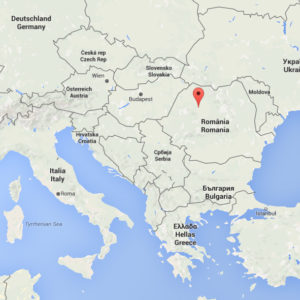 Cluj, Romania
Cluj, RomaniaFall 3rd of February, 1882
L6 Chondrite
Complete piece, 95,6g
Size: 5,0 x 4,0 x 4,0 cm
Remarks: Ex Masaryk University collection
History:
A fireball was first observed above Hont County (N of Budapest) then moved until the middle of Transylvania and landed as a meteorite shower after threefold detonation followed by a volley-like rattling and finally, a buzzing noise. 3000 stones (estimated) fell to an elliptical strewn field of 60 km2 area. The size of the stones increased from NW to SE (smallest: Gyulatelke [now Coasta], Visa [Vişea] and Marokháza [Tăuşeni], medium: Baré [Bărăi], Vajdakamarás [Vaida-Cămăraş] and Palatka [Pălatca]; largest: Oláhgyéres [Ghirişu Român], Keszü [Chesău] and Mocs [Mociu]), the largest (35-kg) specimen fell over Mocs (now Mociu). The distribution of the stones and the overall presence of the crust suggest that the meteorite disintegrated prior to entering the atmosphere.
Specimen Description:
An uncommon, large-sized individual with a metal vein running through the fusion crust. The stone comes with two European specimen labels. The larger one is an old label from Masaryk University, which matches the paper label affixed to the stone. The smaller calligraphied label is unknown, but likely late 19th c.
References:
Meteoritical Bulletin Database
www.historicmeteorites.com
Jarkko Kettunen Meteorite Collection © 2025

